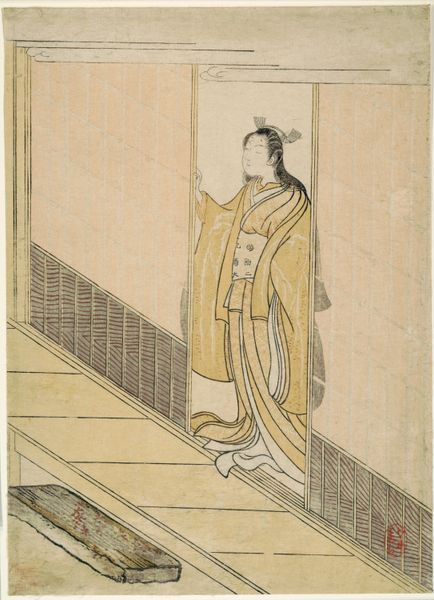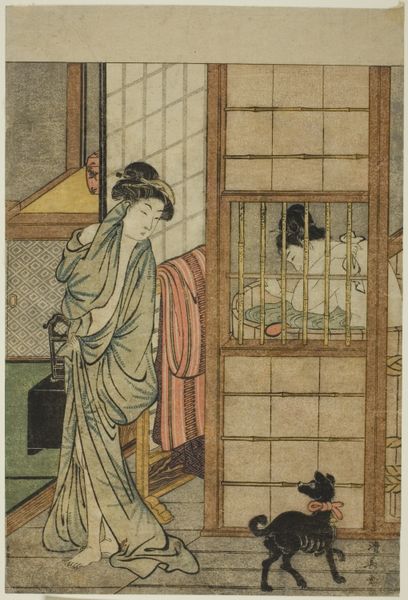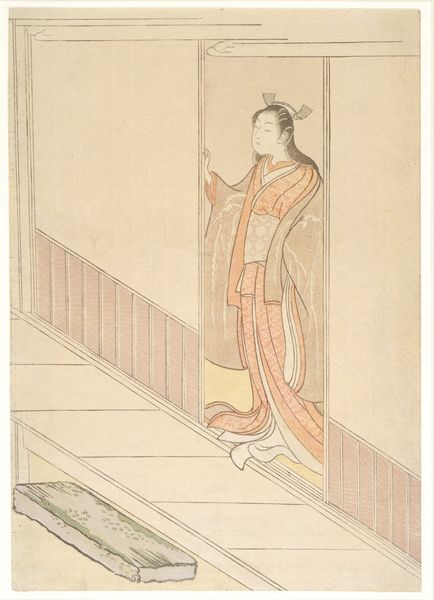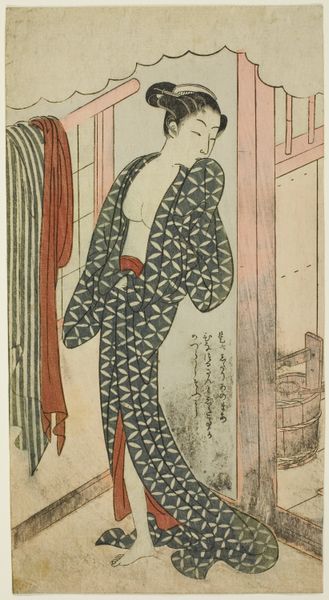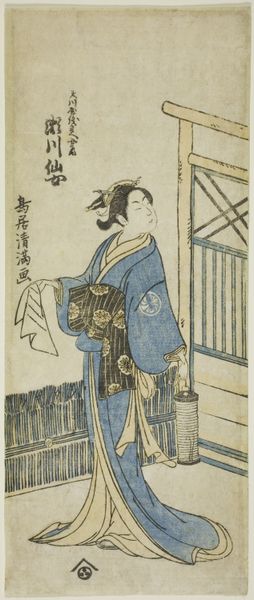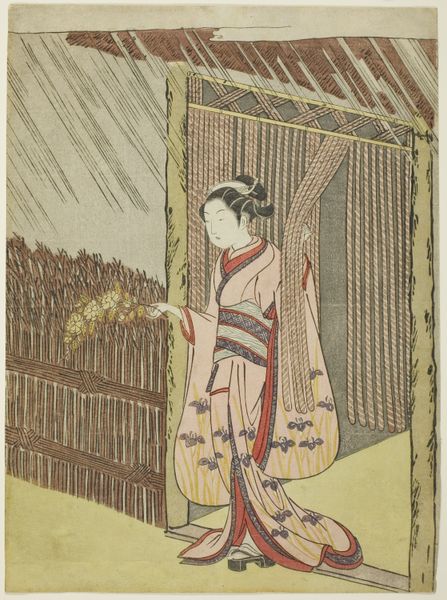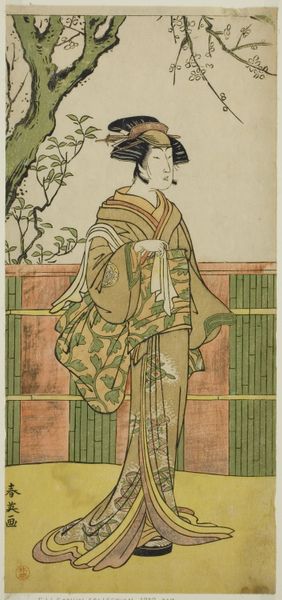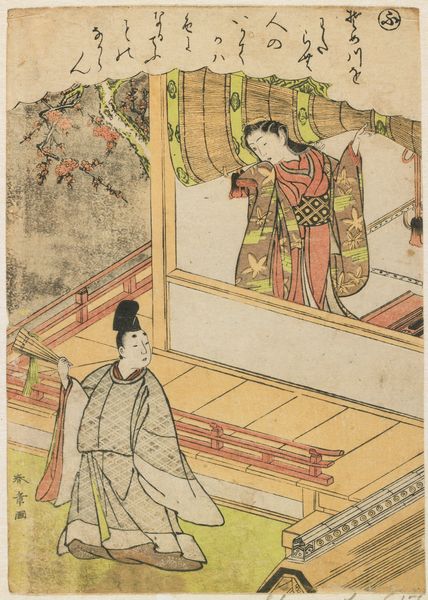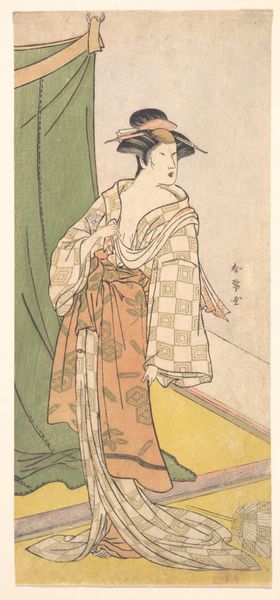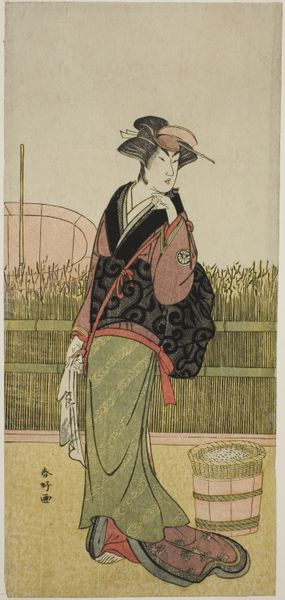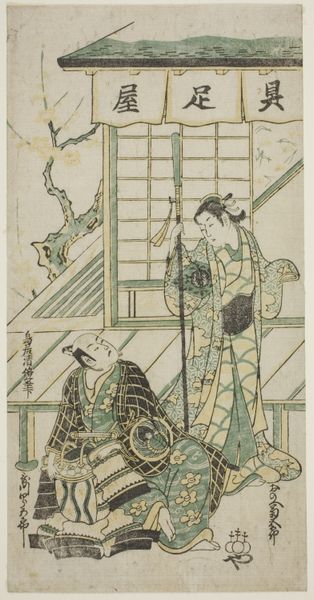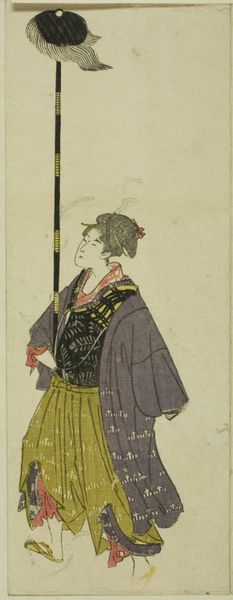
Double-page Illustration from Vol. 2 of "Picture Book of Spring Brocades (Ehon haru no nishiki)" 1771
0:00
0:00
print, woodblock-print
#
portrait
# print
#
asian-art
#
ukiyo-e
#
japan
#
woodblock-print
#
genre-painting
Dimensions: 17.9 × 26.8 cm (7 1/16 × 10 9/16 in.)
Copyright: Public Domain
Curator: Good morning! Let's consider this gem by Suzuki Harunobu, a double-page illustration dating from 1771, taken from the second volume of "Picture Book of Spring Brocades," housed right here at the Art Institute of Chicago. Editor: Wow, it feels like catching a fleeting moment. There’s a sense of intimacy, a private world unveiled just for a second. It's kind of haunting. Curator: It's a fine example of ukiyo-e, employing woodblock print techniques typical of the era. Observe how Harunobu arranges the interior space using orthogonal lines and translucent paper screens, creating depth and structure. The muted palette adds to the image's overall harmony. Editor: It’s strange, the whole setting feels like a cage despite the soft lighting. Note the woman and her hand at the door. Even her position seems hesitant and constrained within that space. The curtain-like cloth or paper above almost appears as another constraint, boxing the space like she's living in a decorative snow globe. Curator: Harunobu was celebrated for capturing the refined elegance of Edo period beauties. See how he captures delicate feminine gestures with a subtle tilt of the head and graceful hand posture. The flowers of the kimono mirror a connection to the natural world. Editor: Do you get the sense of melancholy or anticipation? She almost feels trapped or in some sort of limbo, stuck in the threshold or preparing to meet something momentous on the other side of the wall, despite the delicate trappings surrounding her. Curator: It certainly offers an open narrative! Think about the techniques required to carve this complex scene into woodblocks and the artistry involved in layering each color to achieve those soft gradations and delicate lines. Editor: Thinking about how its crafted makes me reframe her. Knowing she's part of such artful creation brings dignity, rather than sadness. She's not necessarily trapped, she is intentionally posed for observation. Curator: Indeed, the scene presents both the real and ideal worlds through its balanced visual space, inviting us to look further. Editor: This reminds me that art freezes a moment, then it starts conversations that defy time itself! Curator: Beautifully said. It leaves so much to the viewer's own contemplation, and speaks of a time, a world, and an aesthetic ideal beautifully brought to life.
Comments
No comments
Be the first to comment and join the conversation on the ultimate creative platform.
